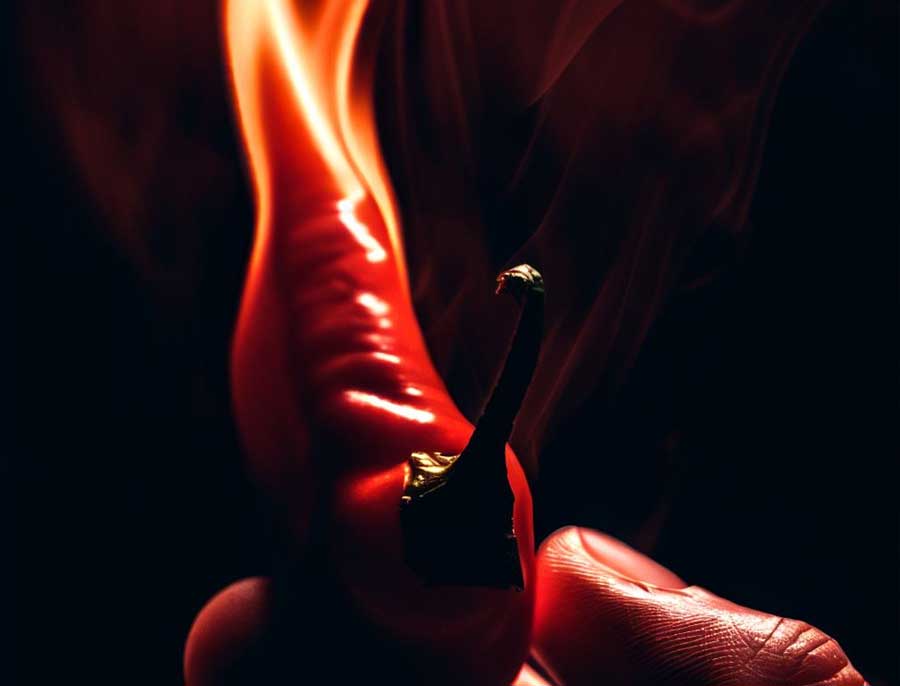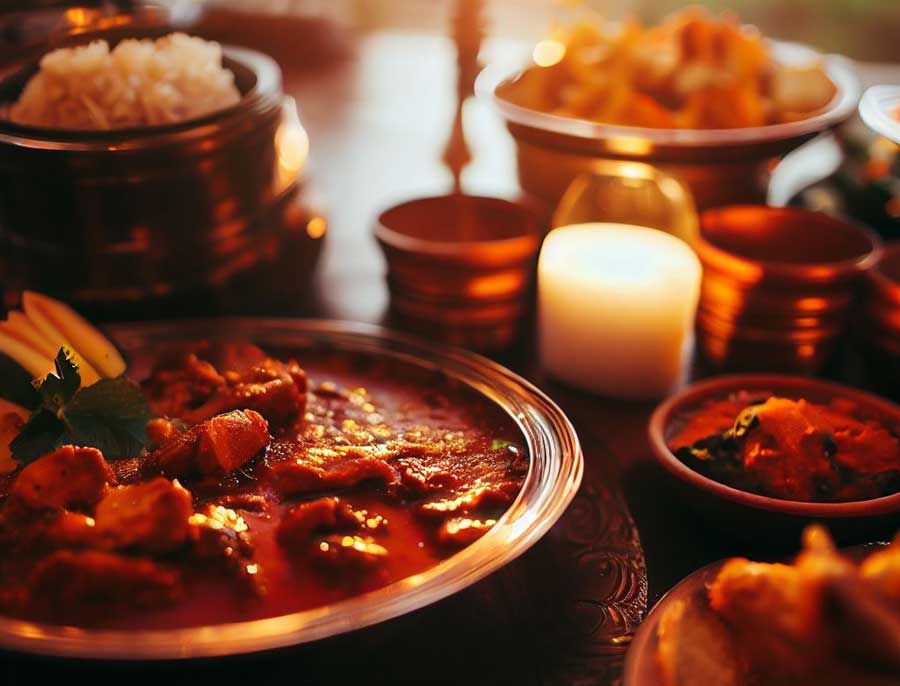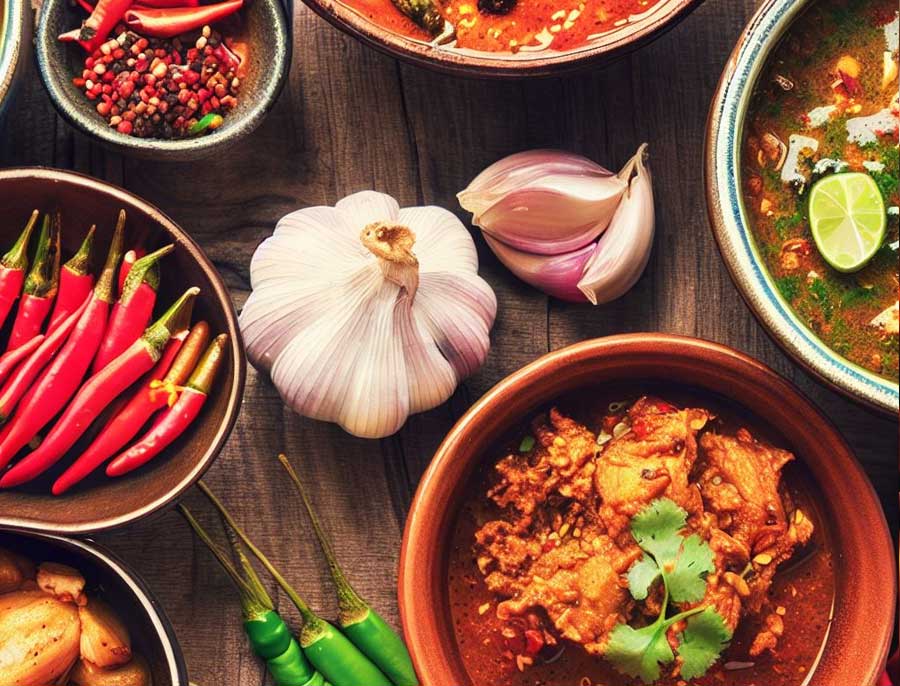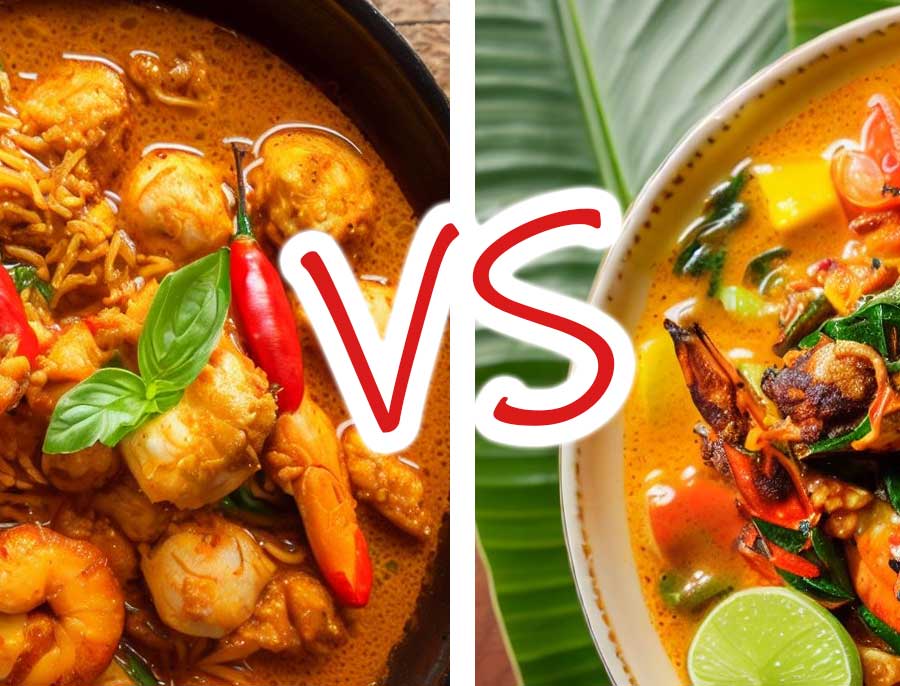When it comes to the world of spicy cuisine, Thai and Indian foods are undoubtedly among the most renowned and beloved culinary traditions. Both offer a tantalizing array of flavours, and a common debate among food enthusiasts revolves around the spiciness of these two cuisines. In this article, we will delve into the intricacies of Thai and Indian cuisines, exploring their use of spices, heat levels, and regional variations to answer the question: Is Thai Food Spicier than Indian Food?
The Spices of Thai and Indian Cuisines
Both Thai and Indian cuisines are celebrated for their adept use of spices to create complex and flavorful dishes. However, the types of spices used and their roles in these cuisines differ significantly.
Thai Cuisine: Thai cooking typically relies on a blend of fresh herbs and spices, such as lemongrass, galangal, and Thai bird’s eye chillies. These ingredients contribute to the vibrant, aromatic, and often fiery character of Thai dishes.
Indian Cuisine: Indian cuisine, on the other hand, showcases a diverse spice palette that includes cumin, coriander, turmeric, cardamom, and a range of chilli varieties. Indian spices are used to create layers of flavour, and while heat is a prominent element, it’s not the sole focus.

Thai Cuisine: The Spiciness Spectrum
Thai cuisine’s spiciness can be a rollercoaster ride, with flavours that span from mild to extremely hot. The level of spiciness in Thai dishes is often balanced with other elements like sweet, sour, and salty. Here are some examples:
Mild: Dishes like Pad Thai and Massaman Curry are relatively mild, with a hint of spice that is well-tolerated by most palates.
Moderate: Green Curry and Panang Curry fall into this category, offering a moderate level of heat that adds excitement without overwhelming.
Spicy: Tom Yum Goong and Som Tum (Papaya Salad) are known for their fiery spiciness, which can make your taste buds tingle.
Indian Cuisine: Just How Spicy Is It?

Indian cuisine is a treasure trove of spices and flavours, and spiciness is a fundamental aspect. However, Indian cuisine approaches spiciness differently from Thai cuisine, focusing on a broader range of spices that contribute to the overall complexity of each dish.
Mild: Dishes like Butter Chicken and Chicken Korma are known for their creamy, mild flavours, with chilli used sparingly.
Moderate: Chicken Tikka Masala and Rogan Josh offer a moderate level of heat, with a harmonious blend of spices that enhance the overall taste.
Spicy: Vindaloo and Phaal are among the spiciest Indian dishes, where the heat can be intense and requires a high spice tolerance.
Regional Variations in Spice
Both Thai and Indian cuisines exhibit significant regional variations in spiciness. Here are a few examples:
Thai Cuisine: In Northern Thailand, dishes tend to be milder, with an emphasis on herbs. In contrast, Northeastern Thai cuisine, such as Isaan, is famous for its searingly spicy dishes.
Indian Cuisine: Each region of India has its unique spice blend and heat preferences. Southern Indian cuisine, for instance, often incorporates more chillies and heat than Northern Indian cuisine.
Heat Levels: Thai vs. Indian
Determining whether Thai food is spicier than Indian food involves considering the heat levels of their spiciest dishes.
Thai Cuisine: Thai cuisine has some exceptionally spicy dishes, but it tends to lean more towards the use of fresh chillies for heat. The infamous Thai bird’s eye chilli, one of the spiciest chilli varieties, is frequently used in Thai cooking.
Indian Cuisine: Indian cuisine offers dishes like the Phaal, which is famed for its extreme heat. Indian cuisine also uses dried chillies, chilli powders, and chilli-based sauces to achieve spiciness.

Taste and Perception of Spice
The perception of spiciness varies from person to person and can be influenced by factors like tolerance, familiarity, and personal preferences.
Thai Food Perception: Thai food is often associated with a quick, intense burst of heat due to the use of fresh chillies. The spice is upfront and immediate.
Indian Food Perception: Indian cuisine is known for its complex, layered flavours, where spiciness is just one element among many. Some may find Indian food spicier due to the gradual build-up of heat.
Spice is Subjective
So, is Thai food spicier than Indian food? It’s not a straightforward comparison. Both Thai and Indian cuisines have their own unique approach to spiciness, and the perception of spice can be highly subjective. While Thai cuisine offers fiery dishes like Tom Yum Goong, Indian cuisine presents its own spicy champions like the Vindaloo.
Ultimately, the level of spiciness in either cuisine can be tailored to individual preferences, making it essential for spice enthusiasts to explore both Thai and Indian cuisines to find their perfect balance of flavours and heat. Whether you crave the bold, immediate kick of Thai chillies or the gradual crescendo of Indian spices, both cuisines offer a world of culinary excitement for spice lovers to savour.
In the end, it’s not a matter of which cuisine is spicier, but rather a celebration of the diverse and delightful ways in which spice is used to enhance the world of culinary experiences.

